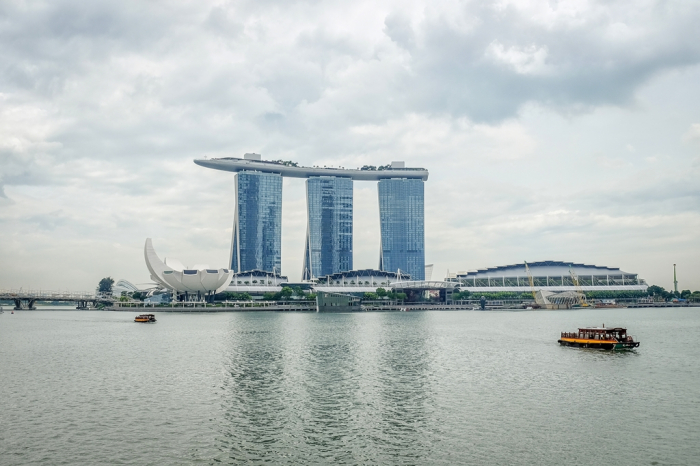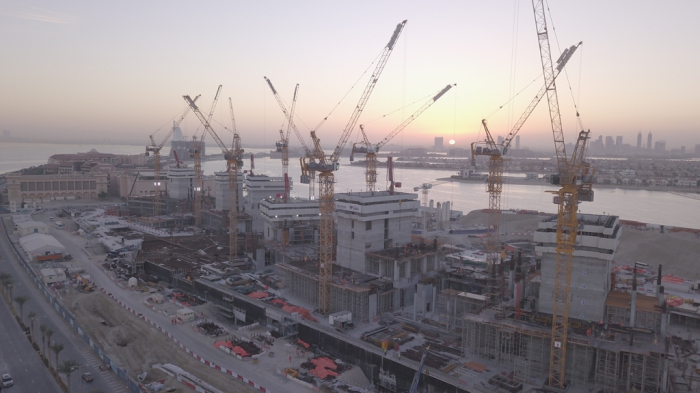Mergers & Acquisitions
Dubai sovereign fund in talks with Global Sae-A to sell Ssangyong E&C
Global Sae-A sends LOI to ICD for 99.95% stake in Ssangyong E&C as it aims to expand business portfolio, overseas business
By Jun 02, 2022 (Gmt+09:00)
3
Min read
Most Read
LG Chem to sell water filter business to Glenwood PE for $692 million


Kyobo Life poised to buy Japan’s SBI Group-owned savings bank


KT&G eyes overseas M&A after rejecting activist fund's offer


StockX in merger talks with Naver’s online reseller Kream


Mirae Asset to be named Korea Post’s core real estate fund operator



Dubai’s sovereign wealth fund is discussing the sale of Ssangyong Engineering & Construction Co. to a South Korean textile business group.
Global Sae-A has submitted a letter of intent for the Korean builder to its top shareholder Investment Corporation of Dubai (ICD), which manages about $302 billion in assets, according to investment banking industry sources in Seoul on Thursday. The South Korean group aims to buy a 99.95% Ssangyong E&C stake owned by ICD. It will purchase old shares held by the sovereign wealth fund and new stocks to be issued by Ssangyong.
Global Sae-A is set to start due diligence soon, and plans to negotiate with a goal to sign a share purchase agreement as early as end-July.
The group holding company, which oversees a global apparel maker Sae-A Trading, has been expanding its business portfolio through acquisitions in recent years. In 2018, Sae-A Trading took over the plant business from South Korea’s STX Heavy Industries to set up a construction unit Sae-A STX Entech.
Global Sae-A expected the planned takeover to create synergy between Sae-A STX Entech and Ssangyong with order backlogs of 7 trillion won ($5.6 billion), strong brand awareness worldwide and construction capabilities.
“With the deal, if accomplished, Ssangyong is expected to carry out Global Sae-A group’s various construction projects and seek other businesses including private developments, housing, hotel and plant projects, as well as future businesses such as hydrogen energy,” said an industry source.
Global Sae-A is predicted to expand its business as a developer by combining its own global investment experiences and Ssangyong’s construction capabilities, according to industry sources.
TO EXPAND GLOBAL BUSINESS
The group is likely to target infrastructure projects including power plants, railways and roads, as well as urban development deals with various financial resources and investment methods in overseas markets such as Latin America where it has operations, they added.
Ssangyong is a general construction company for civil engineering, building, housing and plant businesses at home and abroad. With the world’s best construction capacity of skyscrapers, the company built global landmarks such as Marina Bay Sands in Singapore and Jumeirah Emirates Towers Hotel in Dubai. It also won other major projects in the Middle East, Southeast Asia and Africa.
The builder generates about 40% of sales from other countries. It has been suffering a decline in overseas orders since 2020 due to COVID-19. Major projects such as the 1.5 trillion won deal to build Royal Atlantis in Dubai ordered by Ssangyong’s top shareholder ICD have been delayed, hurting the builder’s profitability.

It reported an operating loss of 110.8 billion last year, the first deficit since 2015, as sales dipped 3% to 1.4 trillion won on-year. ICD tried to improve its financial structure with a rights offering of 62.1 billion won late last year.
The builder has recently been fostering the domestic housing business, which is more profitable due to lower costs. It aims to win 2.9 trillion won worth of orders this year with 2.2 trillion won at home while targeting sales of 1.6 trillion won.
ICD in January 2015 bought Ssangyong, which had been up for sale since 2007. The company suffered a liquidity crunch due to the sluggish construction sector during the 2008-09 global financial crisis and fell into a full-scale capital erosion at the end of 2012. It went through a debt restructuring workout program in 2013 before a court-led rehabilitation process in early 2014.
Ssangyong Chairman and CEO Kim Seok-joon, the second son of the late Kim Sung-kon, founder of the now-defunct Ssangyong Group, has been managing the company since 2010, as ICD recognized the chairman’s overseas networks and ability to win orders even after the acquisition.
Write to Si-Eun Park at seeker@hankyung.com
Jongwoo Cheon edited this article.
More to Read
-
 ConstructionDubai sovereign fund injects $52 mn in debt-laden Ssangyong E&C
ConstructionDubai sovereign fund injects $52 mn in debt-laden Ssangyong E&CJan 06, 2022 (Gmt+09:00)
1 Min read
Comment 0
LOG IN


